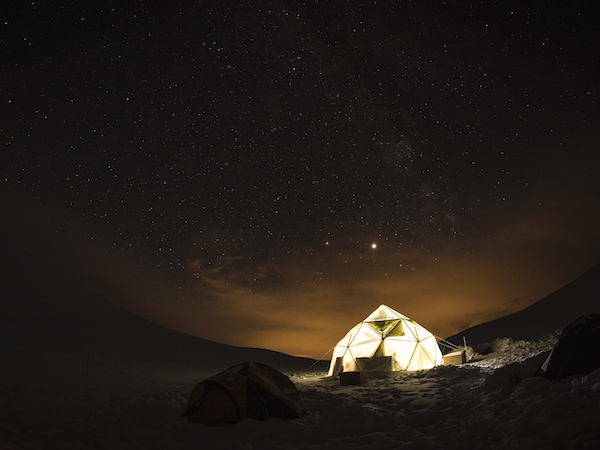Grand Combin (Corbassier) / Switzerland
September 2020

3 ice cores
16, 18 and 26 m lenght
Team
Margit Schwikowski from the Paul Scherrer Institute (PSI) coordinated an international team of six scientists and two technicians: Theo Jenk and Thomas Singer (PSI), Jacopo Gabrieli, Fabrizio de Blasi, Rachele Lodi (Institute of Polar Sciences National Research Council of Italy/University Ca' Foscari of Venice), Paolo Conz (mountain guide) and Riccardo Selvatico (videomaker).The expedition on Mount Grand Combin was funded by the Italian Ministry of Education, University and Research (with the special supplementary fund for research, FISR) and by the Paul Scherrer Institute.
Glacier
Corbassiere is a high-altitude glacier, extending on the North side of Mt. Grand Combin (4314 m a.s.l. on the Pennine Alps) between Mt. Blanc and Mt. Rosa, very close to the Swiss-Italian border.The glacier extension is equal to 14.6 km2 and the altitude difference ranges between 2400 to 4314 m a.s.l. with an average altitude equal to 3201 m a.s.l. (2018 topographic surface). In the upper part of the glacier there is a small plateau of about 0.56 km2, facing north with an average altitude of 4100 m a.s.l.
Thanks to the georadar survey carried out in 2018 on that area in collaboration with the Italian National Institute of Geophysics and Volcanology (INGV), it was possible to identify a site for drilling. The measurements evidenced a maximum glacier thickness of about 100 m over a rocky saddle at the foot of a 35° downslope.
Results
Despite the good results of the previous GPR analysis and high elevation of the drilling site, the collection of the three ice cores from top to bedrock was not possible because of the bad glacial conditions caused by the exceptionally high temperatures occurred. Since the high frequency of ice lenses and the presence of liquid water inside the profile, only three shallow cores of 26, 18 and 16 meter depth were extracted.Two ice cores were analyzed by PSI and ISP-CNR scientists in order to characterize the glacier and the third will be transferred to Antarctica as heritage for future generations.
Updated on October 30, 2023

